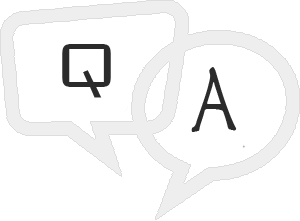
Creational Design Patterns
- Design Patterns - Factory Pattern
- Abstract Factory Pattern
- Design Patterns - Singleton Pattern
- Design Patterns - Builder Pattern
- Design Patterns - Prototype Pattern
Structural Design Patterns
- Design Patterns - Adapter Pattern
- Design Patterns - Bridge Pattern
- Design Patterns - Filter Pattern
- Design Patterns - Composite Pattern
- Design Patterns - Decorator Pattern
- Design Patterns - Facade Pattern
- Design Patterns - Flyweight Pattern
- Design Patterns - Proxy Pattern
- Chain of Responsibility Pattern
Behavioral Design Patterns
- Design Patterns - Command Pattern
- Design Patterns - Interpreter Pattern
- Design Patterns - Iterator Pattern
- Design Patterns - Mediator Pattern
- Design Patterns - Memento Pattern
- Design Patterns - Observer Pattern
- Design Patterns - State Pattern
- Design Patterns - Strategy Pattern
- Design Patterns - Template Pattern
- Design Patterns - Visitor Pattern
J2EE Design Patterns
- Design Patterns - Null Object Pattern
- Design Patterns - MVC Pattern
- Business Delegate Pattern
- Composite Entity Pattern
- Data Access Object Pattern
- Front Controller Pattern
- Intercepting Filter Pattern
- Service Locator Pattern
- Transfer Object Pattern
Design Patterns Useful Resources
Design Patterns Online Quiz
Following quiz provides Multiple Choice Questions (MCQs) related to Design Patterns Framework. You will have to read all the given answers and click over the correct answer. If you are not sure about the answer then you can check the answer using Show Answer button. You can use Next Quiz button to check new set of questions in the quiz.

Q 1 - Which of the following is correct about Singleton design pattern.
A - This type of design pattern comes under creational pattern.
Answer : D
Explanation
Singleton pattern is one of the simplest design patterns in Java. This type of design pattern comes under creational pattern as this pattern provides one of the best ways to create an object.This pattern involves a single class which is responsible to create an object while making sure that only single object gets created. This class provides a way to access its only object which can be accessed directly without need to instantiate the object of the class.
Answer : A
Explanation
true. Wrapper classes like Integer, Boolean uses Decorator pattern.
Q 3 - Which of the following pattern builds a complex object using simple objects and using a step by step approach?
Answer : A
Explanation
Builder Pattern builds a complex object using simple objects and using a step by step approach. This builder is independent of other objects.
Q 4 - Which of the following pattern is primarily used to reduce the number of objects created and to decrease memory footprint and increase performance?
Answer : C
Explanation
Flyweight pattern is primarily used to reduce the number of objects created and to decrease memory footprint and increase performance.
Q 5 - Which of the following describes the Memento pattern correctly?
B - This pattern is used to reduce communication complexity between multiple objects or classes.
C - This pattern is used to restore state of an object to a previous state.
Answer : C
Explanation
This pattern is used to restore state of an object to a previous state.
Q 6 - In which of the following pattern, a class behavior changes based on its state?
Answer : A
Explanation
In State pattern, a class behavior changes based on its state.
Q 7 - Which of the following pattern is used to separate low level data accessing API or operations from high level business services?
Answer : A
Explanation
DAO Pattern is used to separate low level data accessing API or operations from high level business services.
Q 8 - Which of the following describes the Singleton pattern correctly?
Answer : C
Explanation
Singleton involves a single class which is responsible to create an object while making sure that only single object gets created.
Q 9 - Which of the following pattern is used when we want to pass data with multiple attributes in one shot from client to server?
Answer : D
Explanation
Transfer Object Pattern is used when we want to pass data with multiple attributes in one shot from client to server.
Q 10 - Which of the following is the correct list of entities of Intercepting pattern?
A - Filter, Filter Chain, Target, Client
B - Filter, Target, Filter Manager, Client
Answer : C
Explanation
Filter, Filter Chain, Target, Filter Manager, Client are the entities of Intercepting pattern.